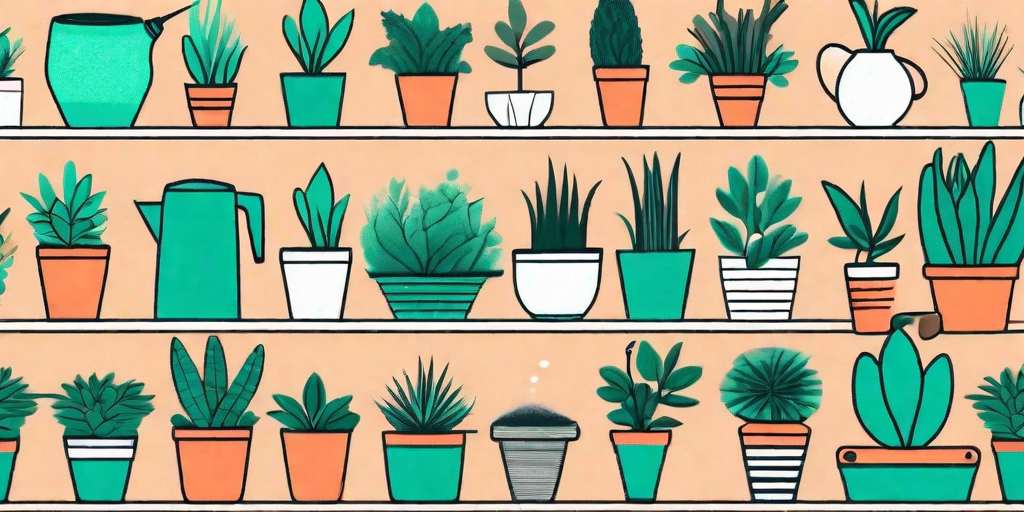
The act of repotting can be quite a shock to your beloved green friends. Imagine being uprooted from your cozy home and placed into a new environment. It's like being teleported from a tropical beach to the Arctic tundra in your swimsuit. Not fun, right? But don't worry, we're here to guide you on how to help your plants not just survive, but thrive after repotting.
Understanding Repotting Shock
First things first, let's talk about what repotting shock is. It's a state of stress that a plant goes through when it's removed from its old pot and placed into a new one. It's like a bad case of homesickness for your leafy friends. Symptoms can include wilting, yellowing leaves, and a general lack of growth. But don't panic, it's not the end of the world. Or the end of your plant.
Repotting shock is a normal part of plant parenthood. It's like sending your kid off to college. There might be a few tears and a bit of sulking, but eventually, they'll adjust and start to grow.
Preventing Repotting Shock
Now that we know what repotting shock is, let's talk about how to prevent it. Because prevention is better than cure, right? Especially when it comes to plant care. And don't worry, these tips won't require a PhD in botany.
Firstly, always repot during the growing season. This is when your plant is at its strongest and most resilient. Secondly, always use fresh potting soil. Old soil can harbor diseases and pests, which can add to your plant's stress. Lastly, be gentle when handling the roots. They're the lifeblood of your plant, so treat them with care.
Choosing the Right Pot
Choosing the right pot is like choosing the right house. It needs to be the right size, have good drainage, and be made of the right materials. A pot that's too small can cramp your plant's roots, while a pot that's too big can cause water to pool at the bottom, leading to root rot. As for materials, terracotta pots are great for plants that prefer dry soil, while plastic pots are better for those that like it moist.
And don't forget about the aesthetics. Your pot is the frame to your plant's masterpiece, so choose one that complements its beauty.
Preparing the New Soil
Preparing the new soil is like preparing a bed for a guest. You want it to be clean, comfortable, and inviting. Start by choosing a soil that's suitable for your plant's needs. Some plants prefer sandy soil, while others prefer loamy or clay soil. Then, add some compost or slow-release fertilizer to give your plant a nutrient boost. Finally, moisten the soil before planting. Dry soil can suck the moisture out of your plant's roots, causing them to dehydrate.
Remember, a happy plant starts with happy soil.
Helping Your Plant Recover from Repotting Shock
Despite your best efforts, your plant might still experience repotting shock. But don't worry, it's not a death sentence. With a little TLC, your plant can bounce back and be even stronger than before.
Start by giving your plant a good drink of water. This will help it rehydrate and recover from the stress of repotting. Then, place it in a location with indirect light. Direct sunlight can be too harsh for a stressed plant. Finally, be patient. It might take a few weeks for your plant to adjust to its new home. But trust us, it's worth the wait.
Monitoring Your Plant's Health
Monitoring your plant's health is like being a plant detective. You need to look for clues and signs of distress. This can include wilting, yellowing leaves, or a lack of growth. If you notice any of these symptoms, it might be a sign that your plant is still in shock.
But don't panic. With a little detective work and some TLC, you can nurse your plant back to health.
Adjusting Your Plant's Care Routine
Adjusting your plant's care routine is like adjusting your own routine when you're feeling under the weather. You might need to give it a little extra water, move it to a shadier spot, or even sing it a lullaby (hey, whatever works!). Remember, every plant is unique, so what works for one might not work for another.
And don't forget to give yourself a pat on the back. Plant parenthood isn't always easy, but it's always rewarding.
FAQs
How long does repotting shock last?
Repotting shock can last anywhere from a few days to a few weeks, depending on the plant and the severity of the shock. But with proper care, your plant should bounce back in no time.
Can a plant die from repotting shock?
While severe repotting shock can potentially kill a plant, it's rare. Most plants are resilient and can recover from the stress of repotting with a little TLC.
Should I water my plant immediately after repotting?
Yes, you should water your plant immediately after repotting. This will help it rehydrate and settle into its new home.
Conclusion
So there you have it, folks. The ultimate guide to helping your plants survive and thrive after repotting. Remember, repotting shock is a normal part of plant parenthood. But with a little knowledge and a lot of love, you can help your green friends bounce back in no time.
Now go forth and repot with confidence. Your plants are counting on you!















